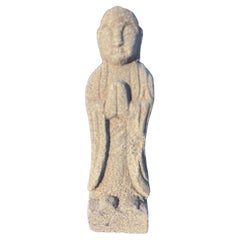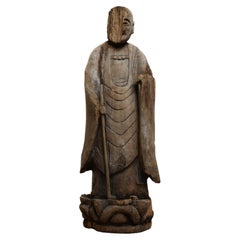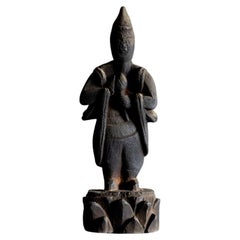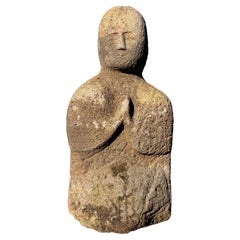Items Similar to Small Edo period stone Buddha from Japan/Jizo Bodhisattva/1800s/Amulet
Want more images or videos?
Request additional images or videos from the seller
1 of 17
Small Edo period stone Buddha from Japan/Jizo Bodhisattva/1800s/Amulet
$800per set
£604.24per set
€698.33per set
CA$1,122.12per set
A$1,248.09per set
CHF 653.22per set
MX$15,222.56per set
NOK 8,207.98per set
SEK 7,720.67per set
DKK 5,212.36per set
About the Item
This is a small stone statue believed to have been made in Japan during the Edo period. It was placed at crossroads, village entrances, or along mountain paths to pray for the safety of travelers, or enshrined in village shrines or homes to protect the lives of the people. The fact that traces of its original coloring remain suggests that it was likely kept in a shrine with a roof or inside a house, where it was carefully preserved.
This stone Buddha was probably not carved by a professional stonemason, but by a local craftsman, monk, or artisan from a rural area or small town. This gives it a simple and warm presence that is truly charming. It is compact enough to be held in one hand (weighing 0.95 kg) and is in excellent condition. The soft red and black painted lines still visible on its surface reflect the faith and culture of the people of that time.
Thanks to its small size, you could place it on a shelf in your home or display it as a protective talisman by your entrance or under the eaves. It can stand on its own, but since the bottom is a bit unstable, we recommend using felt pads or similar supports to make it more secure.
Stone statues of this kind—small, with traces of color still visible—are extremely rare today. This is a heartwarming piece that lets you feel the prayerful spirit of the people of Japan’s bygone days.
Item number: SH118
[We are a specialized team dealing in antiques and vintage items, comprised of stores based on three distinct brands. While focusing on Japanese items, we also offer a carefully curated selection of attractive goods from around the world—each evoking the culture and history of its country of origin.
Unlike the traditional Japanese antique furniture and art that have been appreciated overseas until now, we shine a light on the tools and furniture that were used for many years in ordinary Japanese homes and farmhouses. These objects have gained a unique charm over time, their beauty deepened by the history accumulated through daily life. In today’s world, however, many of these precious items are discarded during home demolitions. We are committed to reassessing their value and passing them on to future generations.
Drawing from our extensive experience—having seen tens of thousands of items through direct purchases, markets, and auction houses—we carefully select and present only the most captivating pieces. This is something made possible only through the years of knowledge and expertise we have cultivated.
Rather than focusing on the widely known facets of Japanese art and culture, we highlight the subtle beauty born from the everyday life of common people. It is this rediscovered beauty, steeped in history, that we strive to share with the world.]
- Dimensions:Height: 8.55 in (21.7 cm)Width: 2.72 in (6.9 cm)Depth: 1.97 in (5 cm)
- Sold As:Set of 2
- Style:Edo (Of the Period)
- Materials and Techniques:
- Place of Origin:
- Period:
- Date of Manufacture:1800s
- Condition:
- Seller Location:Sammu-shi, JP
- Reference Number:1stDibs: LU5487245261162
About the Seller
5.0
Platinum Seller
Premium sellers with a 4.7+ rating and 24-hour response times
Established in 2015
1stDibs seller since 2020
1,624 sales on 1stDibs
Typical response time: 7 hours
- ShippingRetrieving quote...Shipping from: senzoku, Japan
- Return Policy
Authenticity Guarantee
In the unlikely event there’s an issue with an item’s authenticity, contact us within 1 year for a full refund. DetailsMoney-Back Guarantee
If your item is not as described, is damaged in transit, or does not arrive, contact us within 7 days for a full refund. Details24-Hour Cancellation
You have a 24-hour grace period in which to reconsider your purchase, with no questions asked.Vetted Professional Sellers
Our world-class sellers must adhere to strict standards for service and quality, maintaining the integrity of our listings.Price-Match Guarantee
If you find that a seller listed the same item for a lower price elsewhere, we’ll match it.Trusted Global Delivery
Our best-in-class carrier network provides specialized shipping options worldwide, including custom delivery.More From This Seller
View AllJapanese antique stone Buddha "Kannon Bodhisattva" / Edo period/ Garden ornament
Located in Sammu-shi, Chiba
This stone Buddha statue is thought to have been created during the Tenmei era (circa 1781-1789) in Japan's mid-Edo period. Although difficult to read, the characters "Tenmei" can be...
Category
Antique Late 18th Century Japanese Edo Statues
Materials
Granite
Japanese small antique travel gods or dosojin/stone Buddha/1600-1800/Edo period
Located in Sammu-shi, Chiba
This is a stone statue of two priestly deities carved side by side, believed to have been made in the mid to late Edo period (around the 18th to 19th century), and is one of the obje...
Category
Antique 17th Century Sculptures and Carvings
Materials
Granite
$640 Sale Price
20% Off
Japanese antique stone Buddha /Kannon Bodhisattva / late 19th-early 20th century
Located in Sammu-shi, Chiba
This stone statue of Nyoirin Kannon was created between the end of the Edo period and the Taisho period (late 19th century to early 20th century). The Nyoirin Kannon is a Buddha imag...
Category
Antique Late 19th Century Japanese Edo Figurative Sculptures
Materials
Stone
Japanese antique stone god/[Daikokuten]/Stone Buddhas from the Edo period
Located in Sammu-shi, Chiba
Do you know what Daikokuten is?
This god in Japan is an old god who has existed since the end of the Muromachi period (16th century) as one of the seven gods who bestow happiness.
He...
Category
Antique 18th Century Japanese Edo Sculptures and Carvings
Materials
Stone
Japanese antique Kannon stone statue/Edo period/18th to 19th century
Located in Sammu-shi, Chiba
Introducing a stone Buddha of Nyoirin Kannon, created in the mid to late Edo period (circa 1750-1850).
The material used is granite or andesite, and the natural weathering of the sto...
Category
Antique Early 19th Century Japanese Edo Garden Ornaments
Materials
Stone
Japanese Edo Period Kannon Stone Buddha/1700-1850/Garden Ornament
Located in Sammu-shi, Chiba
We are pleased to present a simple stone Buddha of Kannon Bosatsu, made in Japan during the Edo period (circa 1700-1850).
Kannon Bosatsu is known in Buddhism as a merciful savior wh...
Category
Antique 18th Century Japanese Edo Garden Ornaments
Materials
Stone, Granite
You May Also Like
Japanese Tall 100 Year Old Stone Buddha, Hands in Prayer
Located in South Burlington, VT
A very good hand carved stone Buddha/Jizo Guardian sculpture set upon its own carved base
Good display candidate for your favorite indoor or outdoor space
In Japan, Kṣitigarbha, kn...
Category
Early 20th Century Japanese Edo Sculptures and Carvings
Materials
Stone
$200 Sale Price / set
49% Off
Japanese Jizo Bodhisattva Statue, Late 19th Century
Located in Tokyo, Tokyo
Item No.
Late 19th century / Japan
Size W470 D430 H360
A Japanese Jizo Bodhisattva statue from late 19th century.
Category
Antique Late 19th Century Sculptures and Carvings
Materials
Wood
Japanese Antique Wooden Buddhist Figure, Edo Period '1603-1868'
Located in Hitachiomiya-shi, 08
This antique wooden Buddhist figure was crafted in the Edo Period (1603–1868).
Although the specific identity of the deity it represents is unknown, the figure has a gentle presence...
Category
Antique Mid-17th Century Japanese Edo Figurative Sculptures
Materials
Wood
Japanese Seated Praying Buddha Handsome Antique Stone
Located in South Burlington, VT
An older and substantial late 19th to early 20th century stone Buddha/Jizo Guardian sculpture in a mudra of prayer
Good garden candidate
In Japan, Kṣitigarbha, known as Jizō, or re...
Category
Early 20th Century Japanese Meiji Sculptures and Carvings
Materials
Stone, Granite
$1,480 Sale Price / set
20% Off
Japanese Fine Old Stone Seated Buddha
Located in South Burlington, VT
A wonderful small stone seated Buddha with beautiful lichen patina
Good garden candidate
.In Japan, Kṣitigarbha, known as Jizō, or respectfully as Ojizō-sama, is one of the most lo...
Category
Early 20th Century Japanese Taisho Sculptures and Carvings
Materials
Stone
$1,200 Sale Price
20% Off
Japanese Rare Tall Antique Stone Buddha Shakyamuni Dated 1853, 27 Inches
Located in South Burlington, VT
A good antique, 19th century (1863) granite stone Buddha - Shyaka Nyorai Sakyamuni- sculpture perched upon a square base.
Signed lower Kanji front: Kaei 6 ( 1853) March 6.
Good gar...
Category
Early 20th Century Japanese Taisho Sculptures and Carvings
Materials
Stone, Granite
$1,920 Sale Price / set
20% Off
More Ways To Browse
Antique Furniture From 1800s
Antique Village Soft
Praying Hands
Antique Amulet
Antique Japanese Shelf
Antique Drawing Tools
Antique Display Shelf Stand
Japanese Compact
Bodhisattva Statue
Black Carved Buddha
Monk Statue
Buddha Shrine
Japanese Edo Buddha
Stone Buddha Statue
Bodhisattva Japan
Japanese Stone Buddha
Antique Buddha House
Praying Statue
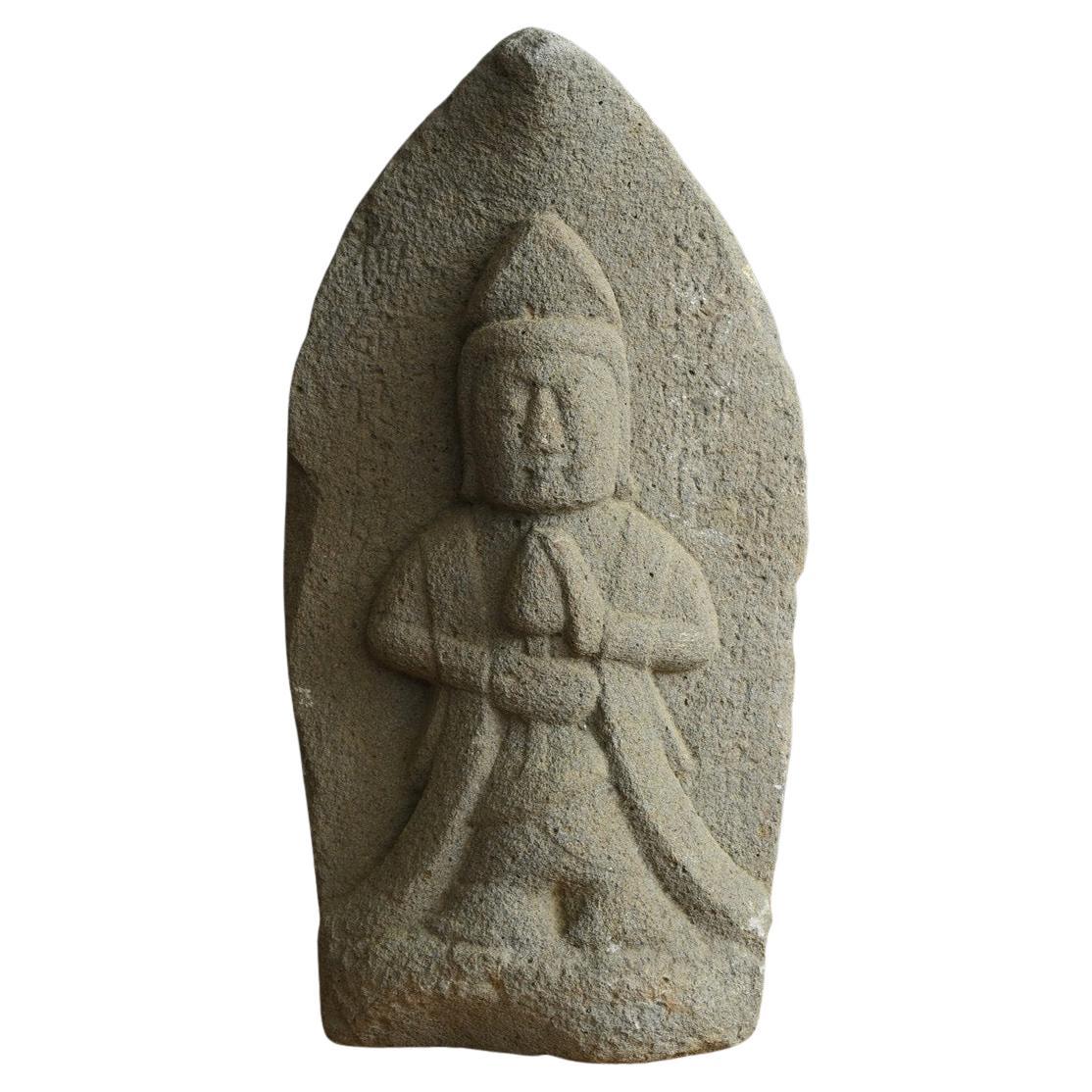
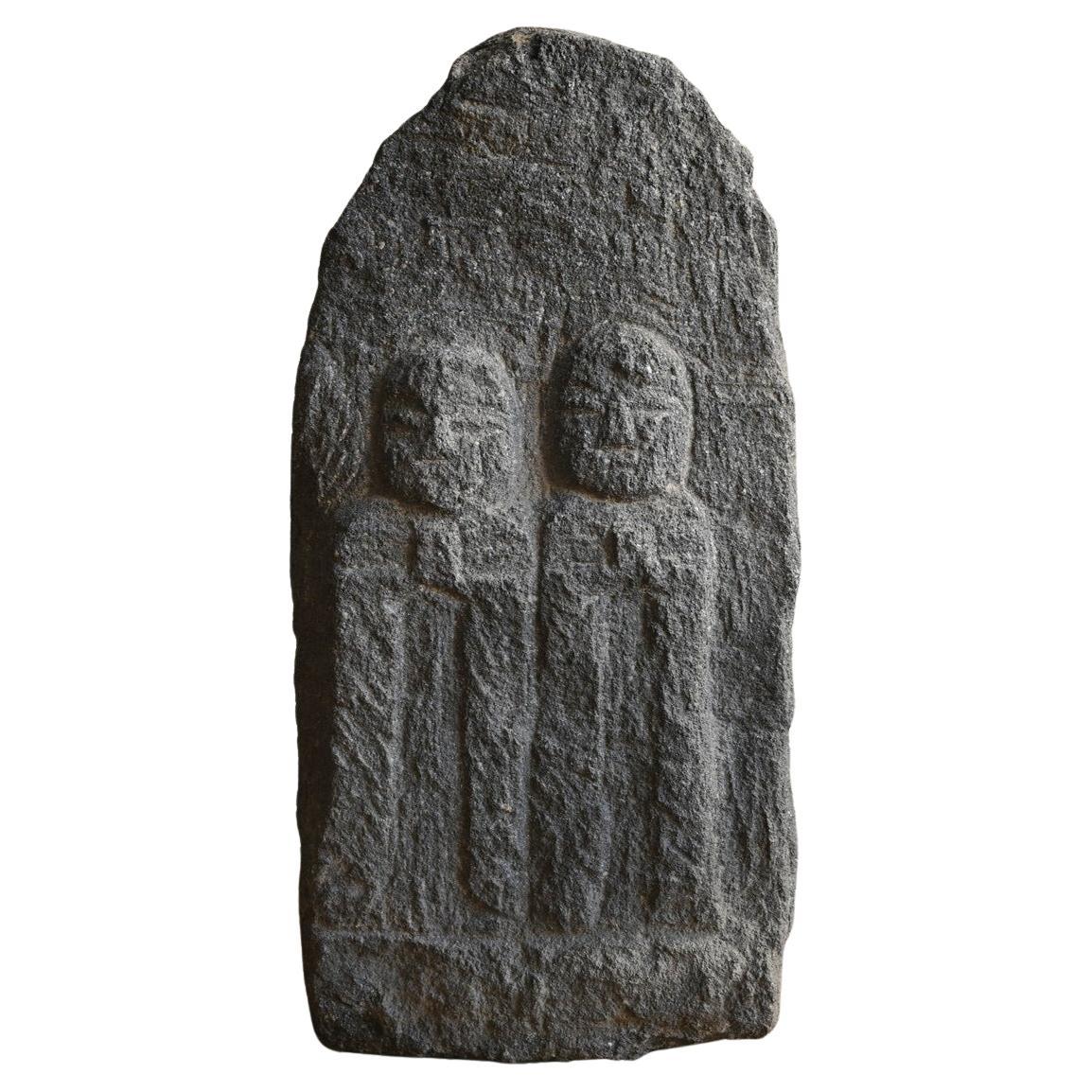

![Japanese antique stone god/[Daikokuten]/Stone Buddhas from the Edo period](https://a.1stdibscdn.com/japanese-antique-stone-god-daikokuten-stone-buddhas-from-the-edo-period-for-sale/f_54872/f_406808721721288384637/f_40680872_1721288385010_bg_processed.jpg)
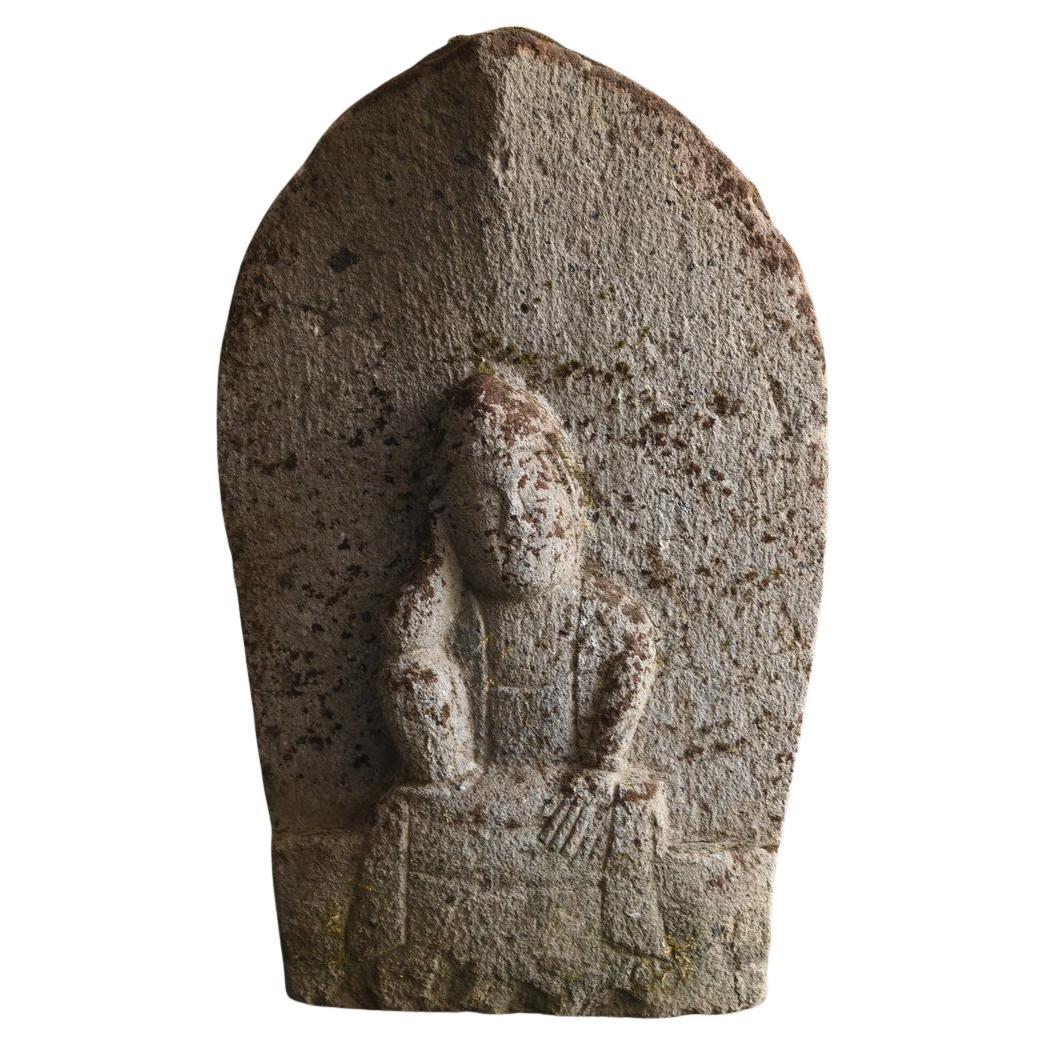
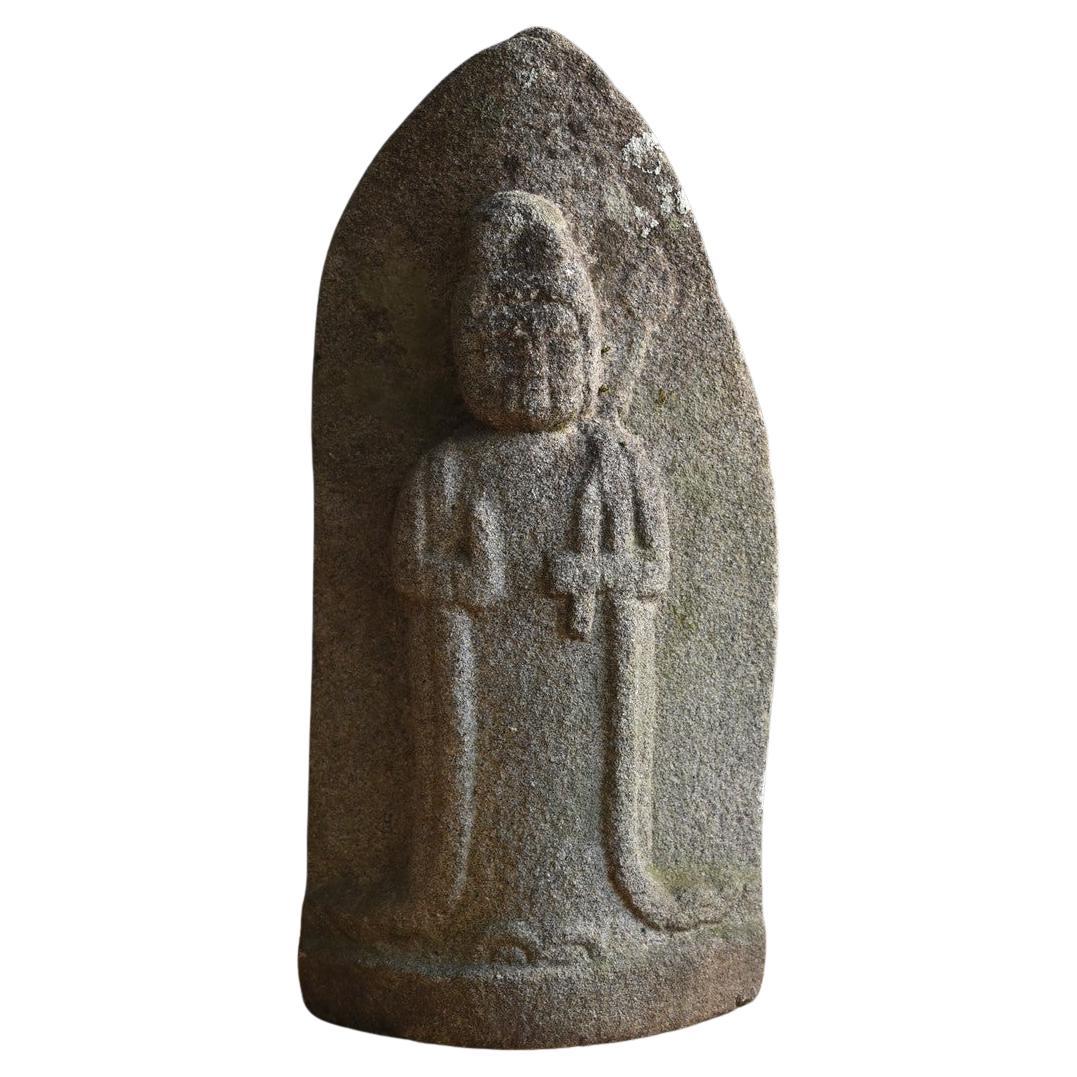
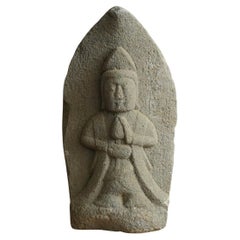
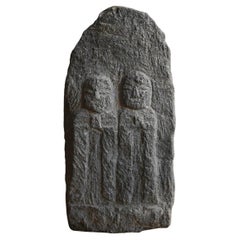
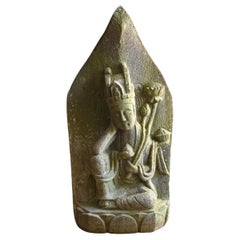
![Japanese antique stone god/[Daikokuten]/Stone Buddhas from the Edo period](https://a.1stdibscdn.com/japanese-antique-stone-god-daikokuten-stone-buddhas-from-the-edo-period-for-sale/f_54872/f_406808721721288384637/f_40680872_1721288385010_bg_processed.jpg?width=240)
